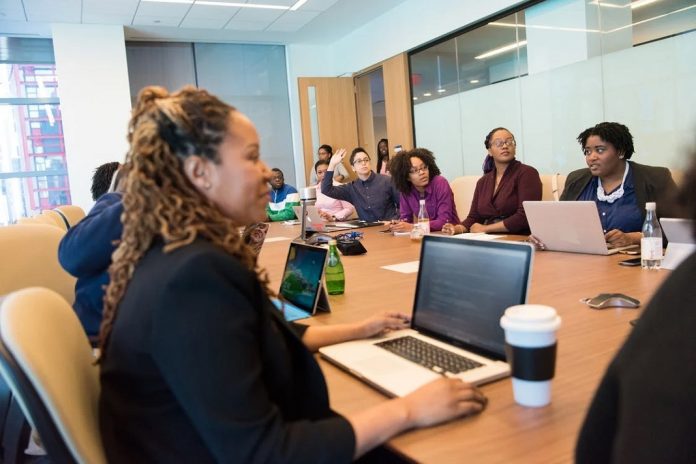by Jeanette Wheeler, Chief HR Officer at MHR International
When much of the workforce retreated to their home offices two years ago, the learning and development community were understandably concerned. The profound lack of face time with senior peers and colleagues cut off opportunities for staff to soak up crucial workplace knowledge by proxy, while in-person conferences, training days, and networking events had to be scrapped en masse.
With an ambitious and expectant new generation entering the workforce, and a skills gap growing across industries, there were fears that remote working would rob business new starters of the social learning experiences needed to meet performance targets and develop in their careers. After all, how could one-size-fits-all e-learning programmes, or onboarding sessions conducted via Zoom, ever measure up to the benefits of face-to-face learning?
But as many workplaces start to adopt agile or hybrid working patterns, they are realising fresh opportunities to revitalise their employee training strategies. Changes in work culture, coupled with rapid advancements in collaborative technologies, are paving the way for more streamlined, cost-effective, and intuitive learning experiences. As such, organisations are now implementing AI-driven smart systems to effectively ‘grow their own talent’ in one central hub, creating and managing personalised learning paths to ensure engagement and progress throughout the employee lifecycle.
Out with the old…
The rise of hybrid working shows that there is still a place for the office. However, its function has changed from being a place for set tasks to being a multifunctional, collaborative space. Employees often learn simply from being there: they overhear conversations, observe peers, and acquire knowledge by osmosis from those around them.
But while the office has evolved with the times, other pre-Covid staples have not fared so well. Take the traditional employee training day, for example. Companies are hardly jumping at the chance to reintroduce day-long, one-size-fits-all sessions, where everyone, in every department, is crammed into a room and spoken at about things that don’t always apply directly to their work. Even before the pandemic, this costly method of staff development was falling from grace.
Therefore, rather than marking the end of the road for employee training and development, the pandemic has accelerated the decline of outdated and one-dimensional learning approaches. This gives businesses a golden opportunity to shift their mindset towards more streamlined, structured, and cost-effective learning processes. And with new technological trends and solutions coming to the fore, the time is ripe to start steering training and development into a smarter, more sophisticated direction.
Leaders looking to onboard or upskill their staff should move away from tired workshop or training day setups and instead embrace the potential of today’s newly hybrid workforce. By coupling social ‘osmosis learning’ with innovative collaborative technology, they can give their employees the best chance of succeeding through more efficient and relevant learning processes.
… In with the new culture of learning
Organisations must now adopt a more structured approach to employee learning and development. Talent-mapping is essential: companies should begin by creating a comptetency framework that provides a clear map of their employees’ competencies, including technical abilities, skills, and traits. The map can then be used to nurture the development of diverse workforce communities through regular bite-sized and hybrid-friendly microlearning experiences.
With learning and development one of the key drivers for employees, it is crucial that businesses have the most efficient and up-to-date processes in place. Training must be engaging, applied, and collaborative, with clear structures and assessment of the outcomes achieved.
In this way, technology can be harnessed to usher in learning experiences that are intuitive and worthwhile for employees. As well as being cost-effective, these more structured approaches ensure a smoother employee onboarding process, supporting new members of the team in getting quickly up to speed.
Transformative tools to streamline learning
In today’s workforce, which now comprises of four distinct generations, continuous workplace learning and development is more important than ever. This is why businesses must transform their training programmes by leveraging integrated learning management system (LMS) solutions.
An LMS is a software application that lets businesses store, organise, create, deliver and track their learning assets – all in one central hub. Its cloud-based setup ensures that the hub can scale up seamlessly to accommodate the needs of an increasingly dispersed and agile workforce, removing all barriers to accessing stimulating and personalised learning activities.
By streamlining learning processes, an LMS lets employers easily track metrics such as which materials are being accessed and how often. They can then use these insights to develop their learning assets in line with an individual’s needs, to keep them on top of their training. Encouraging healthy competition through gamification features also allows employers to gauge how effectively the material is being absorbed, thereby taking steps to ensure that learning sticks.
The most effective solutions are powered by AI. AI provides invaluable analysis of entire content libraries, thereby guaranteeing that valuable training assets do not go underused. And for the very best results, companies should look for an LMS that integrates easily with their HR systems, as this ensures real-time insights into an employee’s training history, results, and progress, while generating personalised, in-depth development plans.
Employee training should never be crammed into single, school-like sessions or treated as an afterthought. To challenge and nurture the talents of a diverse, modern workforce, companies must create agile, hybrid learning experiences by partnering with the right LMS provider. With engaging tactics such as gamification, an easy-to-use employee interface, and a comprehensive library of relevant microlearning materials, employee training programmes are now primed to switch from chore to choice.









































